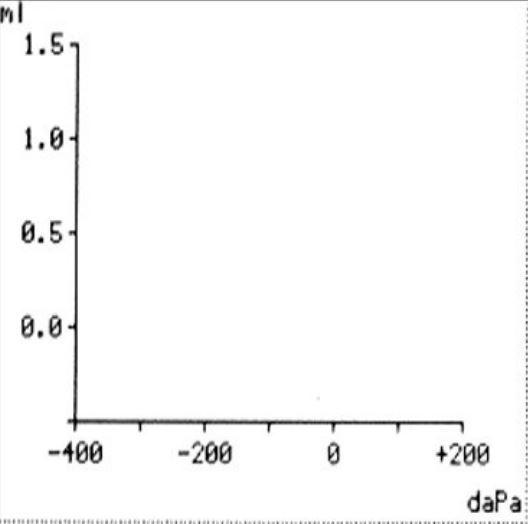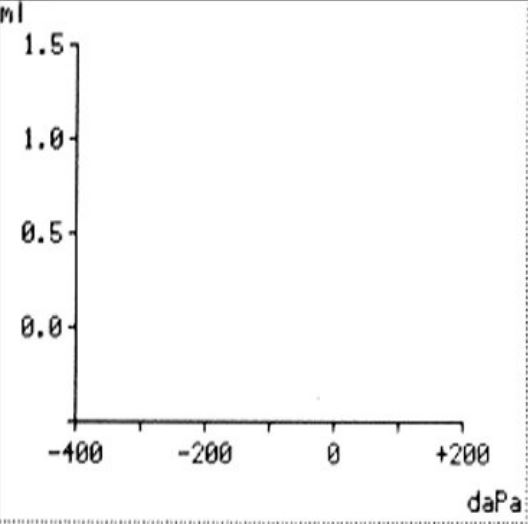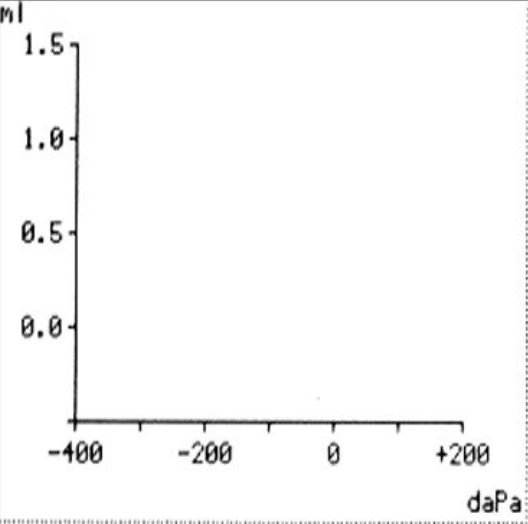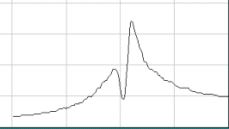The volume of a ≥18 adult ear canal:
What is .6 - 2.0
During subjective verification of hearing-aid directionality, a patient indicates that when noise comes from behind, the noise seems especially loud. Which of the following is most likely the cause?
A.Both microphone openings are probably blocked.
B.The microphones are probably wired backward.
C.Low-frequency gain is too high.
D.The vent is too large.
E.The vent is too small.
(B) is correct. Directional microphones are designed to reduce sounds from behind the listener. If the listener perceives that sounds are loud from behind, likely the front microphone is functioning like the back microphone and undesirable sounds are not being cancelled from behind.
The unit of ECV
ml (or cc)
Occurring regularly (daily or weekly)
Intermittent Tinnitus
Involves presenting broadband noise in increasing steps until it reaches a level where the tinnitus is no longer heard
Minimum Masking Level
The tympanometric peak pressure of a ≥18 adult:
What is -100 to 50
The hearing-aid input transducer that is sensitive to electromagnetic energy is the
A.omnidirectional microphone
B.directional microphone
C.telecoil
D.internal receiver
E.external receiver
(C) is correct. The telecoil is the only hearing-aid input transducer that is sensitive to electromagnetic energy.
The price of admittance is knowing the answer to the question
ml
A continuous noise
Constant Tinnitus
Temporary decrease in tinnitus after a prolonged acoustic stimulation
Residual Inhibition
The volume of children 3 - 10 year olds ear canals:
What is .3 - .9
A patient wearing a behind-the-ear hearing aid returns to an audiologist with a complaint that sound is hollow and that her own voice sounds as if it were in a barrel. Which of the following actions by the audiologist would likely be most helpful in this situation?
A.Lowering the OSPL90
B.Adding a vent or enlarging the present vent
C.Ordering a new earmold without a helix portion
D.Adding a 680-ohm or 1500-ohm damper to the earhook
E.Widening the earmold bore
(B) is correct. A hollow sound indicates that low frequencies are being overemphasized; a vent would help low-frequency sound to escape before being amplified.
You down with TPP
daPa
Occurring every few weeks or months
Occasional Tinnitus
Patients comparing the pitch produced by a pure tone to the most “prominent” pitch that they are experiencing
Tinnitus Pitch Matching
The tympanometric peak pressure of a child (3-10 yo):
What is -100 to 50
An audiologist fits a patient with a hearing aid. This is the first time the patient has worn a hearing aid. Which of the following is the best indicator that the patient is exhibiting early positive acceptance of the hearing aid?
A.Aided versus unaided single-word recognition scores in quiet
B.The presence of a high-frequency sensorineural hearing loss
C.Self-assessment of listening difficulties
D.Strong motivation to wear a hearing aid
E.Close match between hearing-aid frequency response and prescription specifications
(D) is correct. The patient will not adjust successfully to wearing a hearing aid unless he or she feels motivated to accept any perceived inconvenience in return for better communication.
Tympanometric Width
daPa (50% of its admittance value)
A sudden sound, usually lasting less than a minute
Spontaneous Tinnitus
Patient’s adjusting the intensity of a tone so that it has the same “loudness” as the tinnitus they are experiencing
Tinnitus Loudness Matching
Static acoustic admittance of adult:
What is .3 - 1.7
A patient has been identified with normal hearing through 1500 Hz with a bilateral sharply-sloping sensorineural loss in the frequency range above 1500 Hz. The most appropriate system of amplification to recommend for this patient is
A.binaural completely-in-the canal hearing aids
B.receiver-in-the-ear (RITE) aids with an open ear fitting
C.binaural behind-the-ear aids with occluding earmolds
D.in-the-ear aids with no venting
E.an assistive listening device
(B) is correct. Given that this patient does not have a low-frequency hearing loss, a RITE hearing aid with an open ear fitting will allow low-frequency sounds to enter without being amplified. As a result, the emphasis of amplification will be in the high frequencies.
Probe Frequency for babies <4 months and why?
1000Hz
Lasts minutes to days, often after noise exposure
Temporary Tinnitus
Why are distortion product OAEs important?
Shows a true organic change in auditory function – this help us answer the “Why?” question a patient might have.